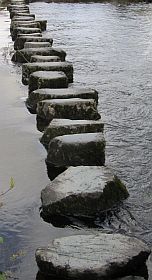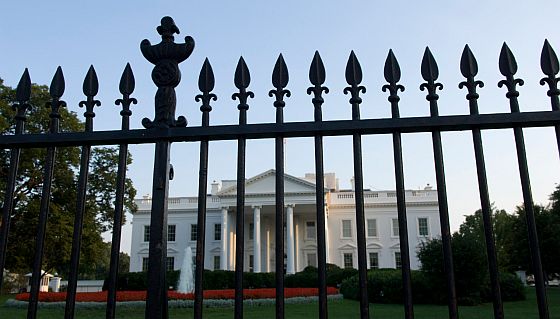Washington is often — and justifiably — criticized for viewing the world through a U.S.-centric prism. But many of the U.S. government’s fiercest critics are guilty of the same narrow orientation.
A case in point is an analysis provided by Glenn Greenwald and Murtaza Hussain in The Intercept yesterday: “The Khorasan Group: Anatomy of a Fake Terror Threat to Justify Bombing Syria.”
Up until last week, hardly anyone, including seasoned Syria watchers and Syrians themselves, had heard of an outfit called the Khorasan Group and so sober warnings from high officials in the U.S. government that this group poses a greater threat to the U.S. than ISIS, were received by some observers with a measure of skepticism.
The Intercept analysis traces the recent evolution of the Khorasan narrative as presented by the servile American media and reaches this conclusion:
What happened here is all-too-familiar. The Obama administration needed propagandistic and legal rationale for bombing yet another predominantly Muslim country. While emotions over the ISIS beheading videos were high, they were not enough to sustain a lengthy new war.
So after spending weeks promoting ISIS as Worse Than Al Qaeda™, they unveiled a new, never-before-heard-of group that was Worse Than ISIS™. Overnight, as the first bombs on Syria fell, the endlessly helpful U.S. media mindlessly circulated the script they were given: this new group was composed of “hardened terrorists,” posed an “imminent” threat to the U.S. homeland, was in the “final stages” of plots to take down U.S. civilian aircraft, and could “launch more-coordinated and larger attacks on the West in the style of the 9/11 attacks from 2001.””
As usual, anonymity was granted to U.S. officials to make these claims. As usual, there was almost no evidence for any of this. Nonetheless, American media outlets – eager, as always, to justify American wars – spewed all of this with very little skepticism. Worse, they did it by pretending that the U.S. Government was trying not to talk about all of this – too secret! – but they, as intrepid, digging journalists, managed to unearth it from their courageous “sources.” Once the damage was done, the evidence quickly emerged about what a sham this all was. But, as always with these government/media propaganda campaigns, the truth emerged only when it’s impotent.
The first problem with this conspiracy theory — its claim that the Khorasan Group was invented for domestic propaganda purposes — is that such an invention would largely be redundant.
Having successfully presented ISIS as worse than al Qaeda, why muddy the narrative by introducing into the picture a previously unheard of group? If a pretext for bombing Syria was being fabricated, why not posit an “imminent” threat to the U.S. coming from ISIS itself?
The actual story here is one that is somewhat more complex than appeals to conspiracy theorists like Glenn Greenwald and Alex Jones and it requires giving as much attention to what is happening in Syria as to what is happening behind closed doors in the capital of the Evil Empire.
The invention of the Khorasan Group — which is to say, the creation of the name — seems to have been necessitated not by the desire to find a pretext for bombing another Muslim country, but instead the desire to avoid headlines which would identify the target of a cluster of airstrikes by its real name: Jabhat al-Nusra (JN).
I dare say that the average American is no more familiar with the name Jabhat al-Nusra than they are with the Khorasan Group, so why construct a distinction between the two?
This actually has little to do with how expanding the airstrike targeting beyond ISIS would be perceived in the U.S. and everything to do with how it would be seen in Syria.
As was noted in a 2013 report “Jihadist Terrorism: A Threat Assessment,” by the Bipartisan Policy Center’s Homeland Security Project chaired by Lee Hamilton and Thomas Kean, Jabhat al-Nusra is “widely acknowledged as the most effective fighting force in the war against Bashar al-Assad’s regime.”
Unlike ISIS, JN has pursued a strategy designed to avoid alienating Syrians who oppose the Assad regime yet do not support JN’s Islamist ideology. The Syrian fighters at its core, having learned from the mistake of alienating the local population while they were fighting in Iraq as members of Abu Musab al-Zarqawi’s Al Qaeda in Iraq (the precursor of ISIS), made some strategic adjustments for JN.
As a Quilliam Foundation report notes, JN opted for:
- predominantly military rather than civic targets, with no bombing of shrines and careful use of suicide bombs to minimise civilian casualties,
- downplaying JN’s rhetoric concerning sectarianism and kuffar (labelling Alawites, Shiites and Sufis as non-Muslims)
- the decision to use a different name to avoid preconceptions associated with Al Qaeda.
If the Obama administration chose for debatable reasons to target a unit inside JN and wanted to explain itself to the American public, it didn’t need to concoct a new name for this unit. It could simply present the same assertions about plots to attack the homeland and say that they emanate from Syria’s al Qaeda affiliate, Jabhat al-Nusra.
After all, Mohsin Al-Fadhli who in recent reports has been described as the leader of the Khorasan Group has also been referred to as the de facto leader of al Qaeda in Syria.
An Arab Times report in March this year said:
Al-Fadhli lives in north of Syria, where he is in control of al-Qaeda. He entices and recruits jihadists from among the European Muslim youths, or from those who embrace Islam. After choosing the youths, he trains them on how to execute terror operations in the western countries, focusing mostly on means of public transportation such as trains and airplanes. His activities were also focused on directing the al-Qaeda elements to execute operations against four main targets, which are Assad’s military, the Free Syrian Army, the ‘Islamic Front’ and ‘Da’esh’ [ISIS]. Sources revealed that Al-Fadhli supports ‘Al-Nusra Front’ against ‘Da’esh’, especially after the Al-Nusra leader Abu Mohammad Al-Joulani declared his loyalty to al- Qaeda group in April last year.
The decision taken by [Al Qaeda leader] Al-Zawahri to support ‘Al-Nusra Front’ to face ‘Da’esh’ was made after Al-Fadhli provided information about what is happening in Syria. Sources stressed that such a decision indicates the confidence al-Qaeda leadership has in Al-Fadhli. It also confirms that Al-Fadhli is the de facto leader of al-Qaeda in Syria, even though it has not been officially announced over fear of exposing him.
If the leader of the so-called Khorasan Group had such a central position in JN, why should the Obama administration see fit to try and educate the American public about some finer details in the organization’s internal structure?
It didn’t. The distinction between the Khorasan Group and Jabhat al-Nusra appears to have been contrived in a vain effort by Washington to fool Syrians rather than Americans. The U.S. hoped it could chop off one of JN’s limbs without appearing to strike its body.
The problem with a frontal attack on Jabhat al-Nusra is that this would inevitably be perceived in Syria as an attack on part of the opposition which has been on the frontline of the fight against ISIS and the regime — an attack that can thus only provide additional help to Bashar al-Assad.
President Obama says that the fight against ISIS will require ground forces drawn from the Syrian opposition, but by attacking JN the U.S. has swiftly alienated itself from the very fighters — the so-called moderates — on whose support the U.S. supposedly depends.
The ploy of inventing the Khorasan Group didn’t succeed in deceiving Syrians who knew that the men being killed in airstrikes in north-west Syria all belonged to Jabhat al-Nusra. Thus, by the end of last week instead of there being popular rallies welcoming a campaign to destroy the much-despised ISIS, ordinary Syrians were taking to the streets to protest against the U.S. airstrikes.
They already had reason to question American motives, given that Assad can be blamed for far more carnage and destruction than ISIS has wrought, and now it seems their worst fears have been confirmed — whether by design or sheer incompetence, the U.S. despite its oft-stated desire to hasten Assad’s departure seems to be doing more to ensure that he remains in power.
As for whether the U.S. truly has the desire to destroy ISIS remains far from clear. So far it has demonstrated a greater interest in destroying empty buildings than responding to desperate calls to block the ISIS assault on Kobane, the Kurdish city in northern Syria that truly faces an imminent threat to its survival.
Least of all is there any evidence that Obama has anything that barely resembles a coherent strategy.
 Independent journalism is an alternative to the mainstream media, free from corporate control and without ties to the political establishment — at least that’s the way most people define independence.
Independent journalism is an alternative to the mainstream media, free from corporate control and without ties to the political establishment — at least that’s the way most people define independence.
